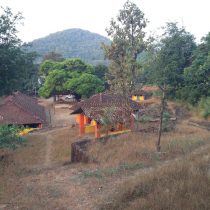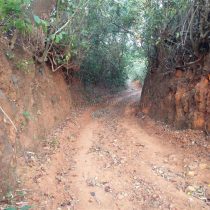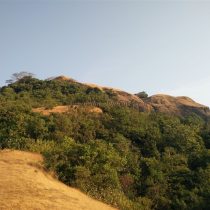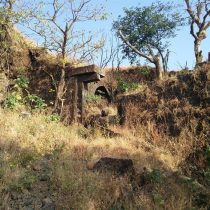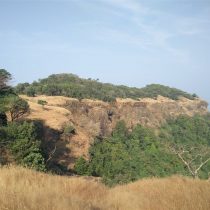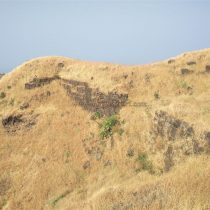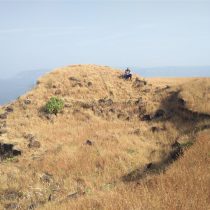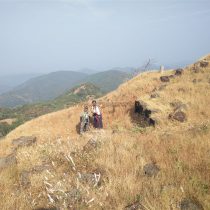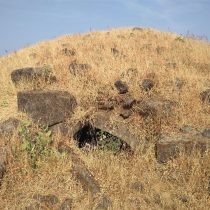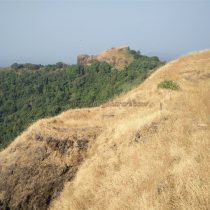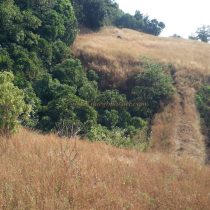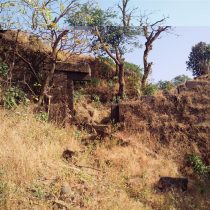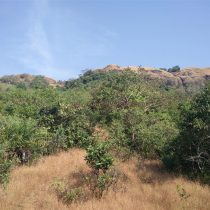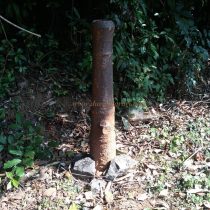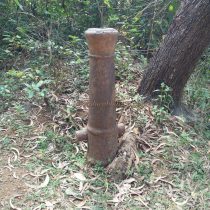HANUMANTGAD-SINDHUDURG
TYPE : HILL FORT
DISTRICT : SINDHUDURG
HEIGHT : 2313 FEET
GRADE : MEDIUM
There are two forts named Hanumantgad in Maharashtra. One is Hanumantgad in Nimgiri in Junnar taluka and the other is Hanumantgad in Phukeri village near Banda in Dodamarg taluka. This village of Phukeri, which is blessed with an abundance of nature, should be visited at least once. Phukeri village, situated at the head of the Sahyadri, is surrounded by densely forested hills on all four sides and Hanumantgad is situated on the hill behind the village. With mountains on all four sides, the atmosphere here is airy and fragrant. The distance between Sawantwadi-Banda-Phukeri is 31 km and Banda Phukeri is 16 km. The road from Banda to Phukeri village at the foot of the fort is densely forested and there are some forks on this road. An unpaved road leads from the village of Phukeri to the back hill.
...
After walking for five minutes along this road, you come across a small ravine. The footpath to the left from this pass leads you directly to the gate of the fort. As this fork of the road is not easily noticed, it is advisable to take someone from the village with you to this fork. The next path, however, is visible. This road leads to the last vertical ascent of the fort. Before reaching the ramparts, one can see the path leading from here to the lower side of the ramparts. After walking down this path for five minutes, you can see two cannons lying in the bushes. You have to be accompanied by a knowledgeable person from the village to see these cannons. Elderly villagers say that when 5 cannons from the fort were brought to the village 30-35 years ago, 3 of them fell into the gorge. Two of these cannons are visible, while one cannot be seen as it might have been buried in the ground. The remaining two cannons of size six feet are see buried upside down on the village road. After seeing the cannons, come to the main road and go towards the ramparts. At the end of this rampart is a small square gate facing south. The door frame is a bit broken and there are porches for the guards on the inside. Half an hour is enough to get here from the foothills. The ramparts of the fort are built at the mouth of the gorge and are used as a barrier to block water. As you walk around the fort, you can see this type of total of five dams on the fort. This is a special feature of this fort. The fort is 2310 feet above sea level and its plateau is spread over 26 acres from south to north. On the plateau on the right side of the gate, you can see three dams built on the base of the ramparts, a pool of stagnant water, and a dried-up cistern, as well as broken ramparts. The tip of the plateau is fortified. On the plateau to the left of the gate, on the base of the ramparts, one comes to the ruined north-facing main gate of the fort to the east. The two gates at the main gate are built one behind the other. The construction of this gate has a total of three bastions and the inner gate has guard porches. Remains of a bastion on the edge of the valley and some structures in front of the door can be seen. In some parts of the fort, a large number of ramparts and bastions remain. There is a forest growing on the hill in the middle of the fort and a large number of architectural remains can be seen in this forest. When you reach the place where you entered the fort, your fort round is complete. The entire fort round takes two hours. From the fort, Sawantwadi, Dodamarg area, and the region up to Goa are visible. Hanumantgad is surrounded by the villages of Chowkul, Asaniye, Gharpi, Jholambe, Khadpade, and Kumbhavade. It is mentioned in the history of Sawantwadi Sansthan that Fond Sawant II came to the throne in 1709 and built some forts between 1709 and 1738. It is believed that Hanumantgad was built by Fond Sawant. The history of Hanumantgad is related to the Sawant of the Wadi. The inner dispute in sawantwadi sansathan Shriram Sawant captured Hanumanthagad and appointed Jaitoba as a fort keeper. When Fond Sawant attacked Hanumantgad, he was defeated and had to flee. In the year 1808, Hanumantgad was captured by Nipanikar Nimbalkar's Chief Apaji Subrao Ghatge and Sawant's Chief Chandriba Subhedar laid siege to the fort. Apaji Subrao Ghatge, who had come to the aid of the fort, was defeated by Chandroba Subhedar at Phukeri Ghat. In the year 1832, when Hanumanthagad was in the possession of Sawant, an expenditure of Rs. 3000 was made for the fort. In 1838, Atmo Chowkekar along with his associates revolted against the British and captured Hanumanthgad on 19 December 1838, although the revolt failed. The British captured Hanumanthgad and demolished the ramparts and gates of the fort to prevent another revolt. The village has beautiful temples where you can stay. The shop near s.t.stop in the village can arrange for breakfast and lunch, but it is necessary to give them enough time. Nearby there is a hand pump as well as a tap for drinking water. Overall, the village had good living and dining facilities.
© Suresh Nimbalkar

